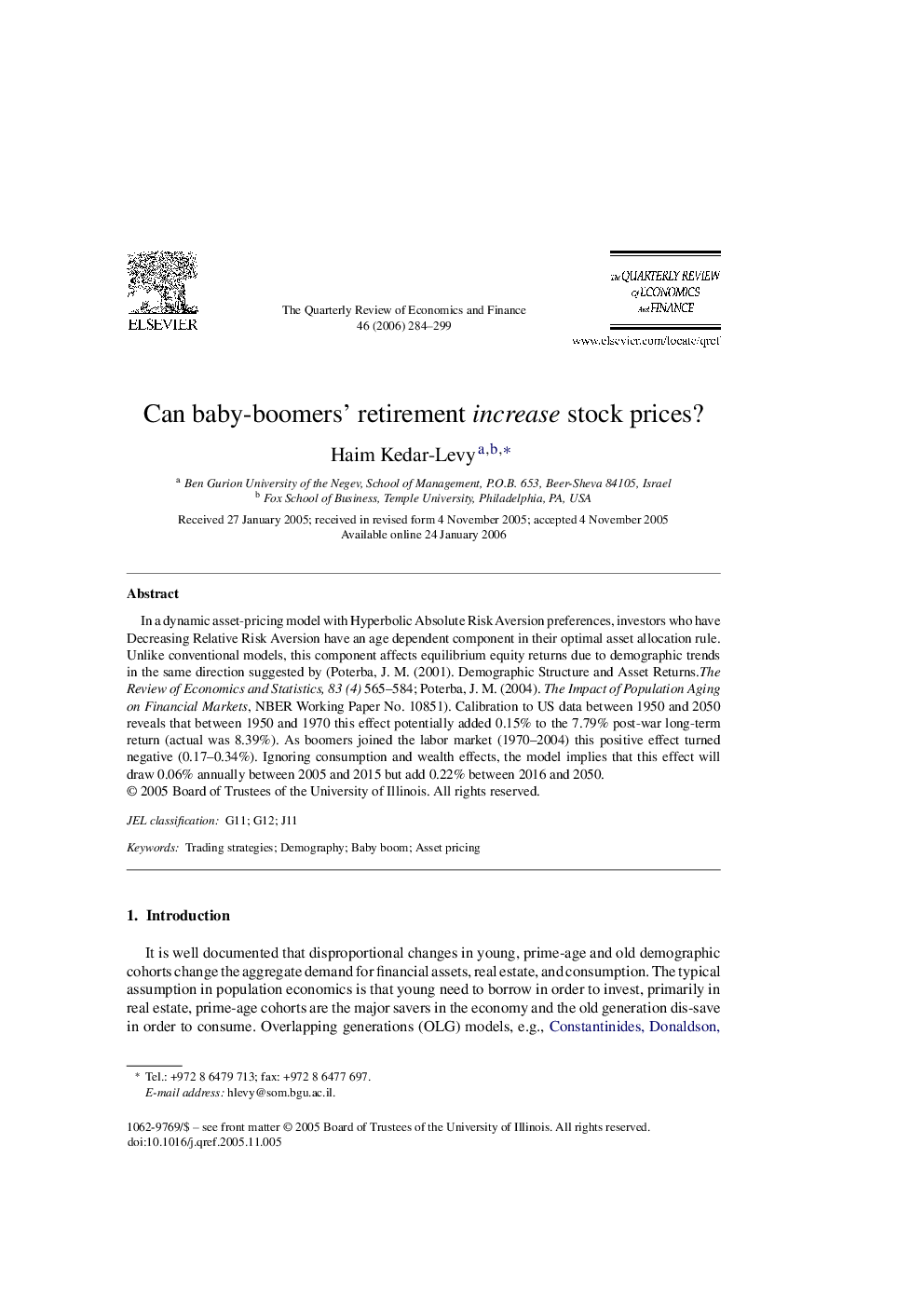| Article ID | Journal | Published Year | Pages | File Type |
|---|---|---|---|---|
| 983389 | The Quarterly Review of Economics and Finance | 2006 | 16 Pages |
Abstract
In a dynamic asset-pricing model with Hyperbolic Absolute Risk Aversion preferences, investors who have Decreasing Relative Risk Aversion have an age dependent component in their optimal asset allocation rule. Unlike conventional models, this component affects equilibrium equity returns due to demographic trends in the same direction suggested by (Poterba, J. M. (2001). Demographic Structure and Asset Returns.The Review of Economics and Statistics, 83 (4) 565-584; Poterba, J. M. (2004). The Impact of Population Aging on Financial Markets, NBER Working Paper No. 10851). Calibration to US data between 1950 and 2050 reveals that between 1950 and 1970 this effect potentially added 0.15% to the 7.79% post-war long-term return (actual was 8.39%). As boomers joined the labor market (1970-2004) this positive effect turned negative (0.17-0.34%). Ignoring consumption and wealth effects, the model implies that this effect will draw 0.06% annually between 2005 and 2015 but add 0.22% between 2016 and 2050.
Related Topics
Social Sciences and Humanities
Economics, Econometrics and Finance
Economics and Econometrics
Authors
Haim Kedar-Levy,
